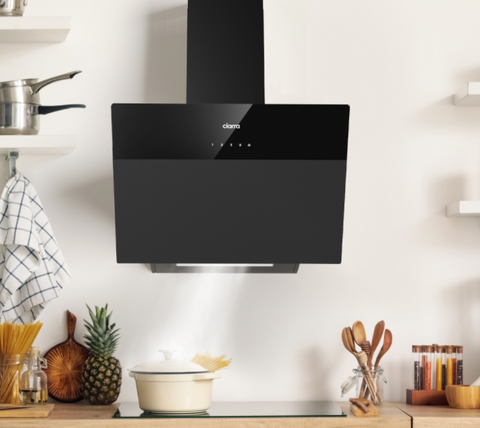Determining the ideal height for a cooker hood is crucial to ensure efficient ventilation and effective removal of smoke, fumes, and odors generated during cooking. The proper positioning of the kitchen hood not only maximizes its performance but also enhances the overall safety and functionality of your kitchen. Here's a comprehensive guide to help you determine the optimal height for your kitchen vent hood.

Manufacturer Guidelines
The first step in determining the height of your cooker hood is to consult the manufacturer's guidelines and recommendations. Manufacturers often provide specific instructions regarding the minimum and maximum installation heights for their cooker hood models. These guidelines are based on factors such as the vent hood's extraction capacity, motor power, and design specifications.
Standard Recommendations
In the absence of specific manufacturer instructions, there are standard recommendations to consider. Typically, the bottom of the cooker hood should be positioned between 24 to 30 inches (61 to 76 centimeters) above the cooking surface. This range provides an optimal balance between effective extraction and maintaining a clear line of sight while cooking. However, it's important to note that these are general recommendations, and individual circumstances may vary.
Cooker Hood Types and Styles
Different types and styles of kitchen cooker hoods may have varying height requirements. Wall-mounted cooker hoods, which are attached to the wall directly above the cooking surface, are commonly installed at a height of 24 to 30 inches (61 to 76 centimeters) above the stove. Island cooker hoods, designed for kitchens with an island or peninsula layout, are typically positioned higher to account for the increased distance from the cooking surface. Island cooker hoods are commonly installed at a height of 30 to 36 inches (76 to 91 centimeters) above the cooktop.
Gas vs. Electric Cooktops
The type of cooktop you have also plays a role in determining the height of your cooker hood. For gas cooktops, it's generally recommended to position the kitchen hood slightly higher than for electric cooktops. This is because gas burners tend to produce more heat and flames, requiring additional clearance to ensure safety and proper ventilation. Follow manufacturer recommendations and local building codes to determine the appropriate height for your specific cooktop type.
Personal Comfort and Safety
Consider your personal comfort and safety when determining the height of your cooker hood. The hood should be positioned at a height that allows you to comfortably use the stove and maintain a clear line of sight to the cooking surface. Additionally, ensure that the hood is not positioned too low, as it may impede your movement and increase the risk of bumping your head while cooking.
Local Building Codes and Regulations
It's crucial to consult local building codes and regulations when installing a cooker hood. Building codes may specify minimum clearance requirements and installation guidelines to ensure safety and compliance. These codes may vary by jurisdiction, so it's important to research and follow the specific regulations applicable to your area.
Customization and Professional Advice
In some cases, custom kitchen designs or unique circumstances may require adjustments to the standard height recommendations. If you have specific requirements or uncertainties, it's advisable to consult with a professional, such as an experienced kitchen designer or installer. They can provide tailored guidance based on your kitchen layout, cooktop type, and ventilation needs.
Remember that the height of the cooker hood is just one aspect of proper installation. It's equally important to ensure proper ventilation ductwork, adequate clearance around the hood, and regular maintenance to optimize its performance.
Conclusion
Determining the appropriate height for a cooker hood involves considering manufacturer guidelines, standard recommendations, cooker hood types, cooktop types, personal comfort, safety, local building codes, and professional advice if needed. By carefully assessing these factors, you can position your cooker hood at the optimal height for efficient ventilation

